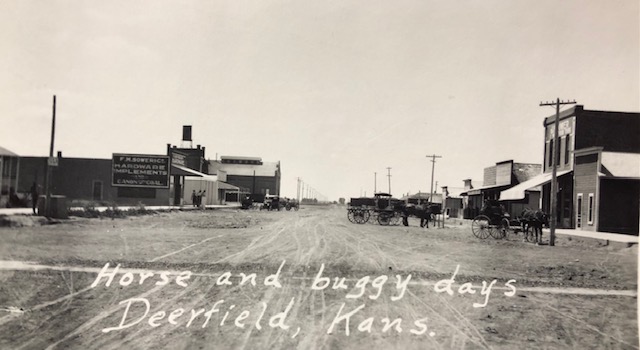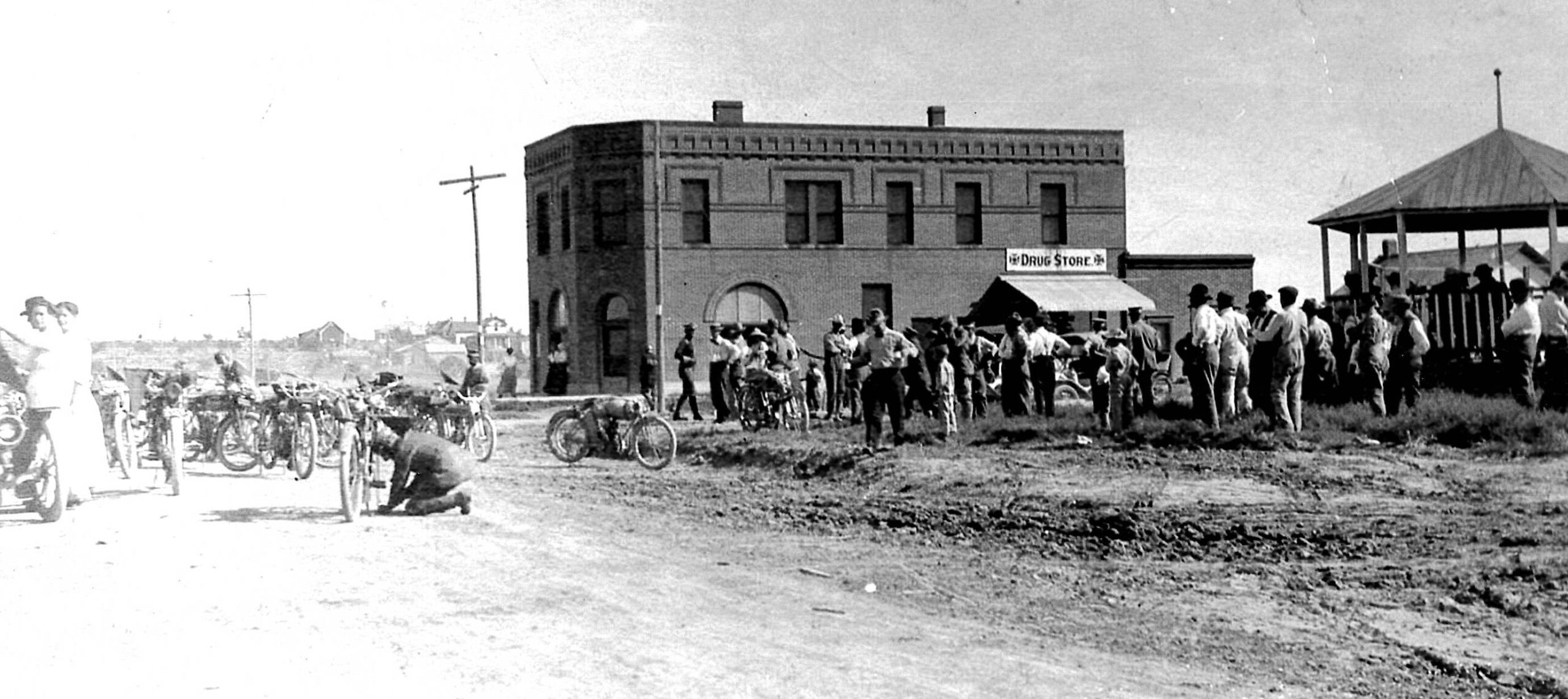New houses and store buildings sprung up seemingly overnight at Deerfield with the dawn of sugar beets in the area. Thinking the town would secure the sugar beet factory, inhabitants began to look around for an advertising outlet, and the town’s first newspaper, “The Deerfield Farmer” was launched on December 22, 1904. Though printed at Garden City, the local editor was a young Deerfield man by the name of Lewis Beckett. The inaugural issue claimed the aim of the paper was to, “help bring about better conditions financially and otherwise. To the citizens of Kearny county, to agricultural and stock interests, it will be especially devoted.” Although the paper lasted not even a year, the town of Deerfield continued to grow.
In January of 1905, Deerfield schools reported a total of 83 students, and so many laborers came during 1905 and 1906 that there was no place for them to stay. Tents were erected for housing including an extra-large tent that was used as a boarding house. On April 1, 1907, several resident electors of the community presented a petition to Kearny County Commissioners requesting that Deerfield be incorporated as a city of the third class. The number of inhabitants at that time inside the City of Deerfield was 225. The petitioners’ request was granted, and businessman John B. Piper was elected the first mayor when city elections were held later that month.
In April 1908, The Deerfield Telephone Company was organized providing both local and rural residents with phone services. Prior to that time, a wire had been run from Lakin’s exchange to the Corbett and Sower general store in Deerfield, and residents had to go to the store to place a phone call. Rural Route #1, which was Deerfield’s first and only postal route, was established Sept. 1, 1908 according to information provided by the late Arnold Kettler, former Deerfield postmaster. George Hurst was the first regular rural carrier and serviced his patrons by means of a horse-drawn vehicle when the 26-mile long route was initiated.
The Deerfield News, published by Cecil P. Rich, arrived on the scene in April of 1909, but Charles Oakford bought out Rich and assumed editorial duties the next month. Oakford also published a socialist paper called the “Prolocutor.” By mid-October, the Deerfield News was finished as the people became very antagonistic toward the editor when each issue became more and more filled with socialist articles and advertising. Deerfield residents became so incensed that that they burned an effigy of Oakford, and the editor was egged while attending a baseball game at Lakin. By the end of October, Oakford had bought a home in Garden City and relocated there.
Deerfield rose above the fray, and in December 1909, the Lakin Investigator declared, “Deerfield is one of the snappy towns of our county, and where three years ago was only one store and a couple of dwellings, now a little city of the third class, with over 200 people, mayor and councilmen full of ginger spirit that makes things move. Two churches, good schools, two general stores, bank and drug store located in brick blocks, two hotels, restaurant, harness store, hardware and implement, machine shop, meat market, lumber yard, livery, barber shops, pool rooms and everything found in a live little western town, surrounded by one of the most intensive farming districts in the whole valley.”
In 1911, John F. Carter began publishing the Deerfield Echo, and that same year, the Deerfield Commercial Club was organized to promote the interests of Deerfield and the surrounding country. C.L. Beckett was installed as president with Jacob Regher, J.E. Lander, L.T. Beckett, R.A. Beckett, I.L. Middleton, Carl Miller, Wm. Kersten, Adam Molz, A.D. White and J.W. Sowers listed as the other officers and directors. An August 1911 Echo listed the following as achievements of the Deerfield Commercial Club: securing large accommodating stockyards, securing the best newspaper of any town many times larger, placement of a public watering place, erection of an irrigating plant at the cemetery, securing a block for a city park, installing electric lights for the park and bandstand, and securing a doctor. “We think this is going some for a town of our age and size.”



SOURCES: History of Kearny County Vol. 1; archives of the Deerfield Farmer, Deerfield Echo, Lakin Investigator, Advocate, Lakin Independent, and Evening Telegram; and Museum archives.
